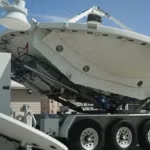
Boeing [BA] on Wednesday reported strong earnings results as it swung to a profit versus a year ago when it suffered from more than $2 billion in charges on commercial and military aircraft programs.Net income in the quarter was $1.8 billion, $2.89 earnings per share (EPS), versus a $234 million (37 cents EPS) loss a year ago. Core EPS, which excludes pension expenses, were $2.55, handily topping consensus estimates by 25 cents.Sales were down, as expected, to $22.7 billion, 8…

 By
By 











